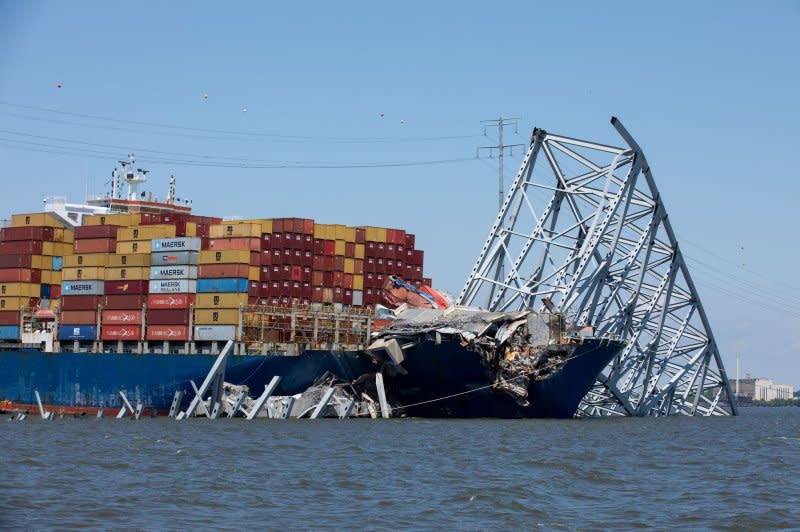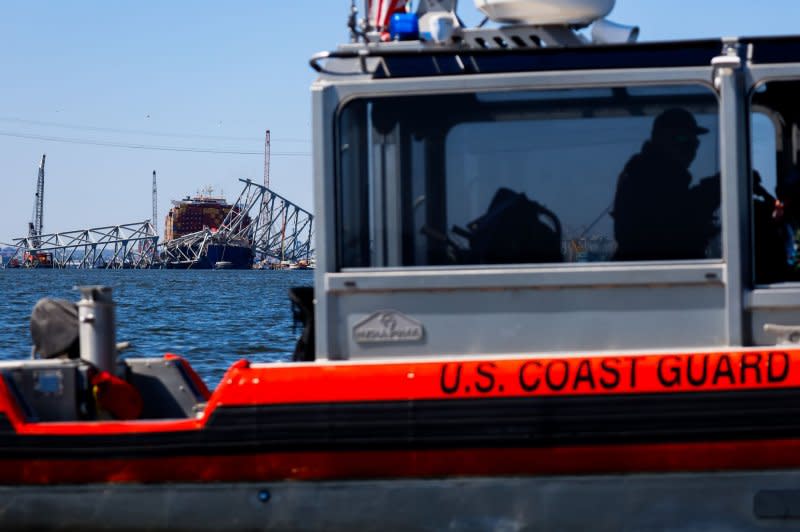Cargo ship Dali refloated, towed away from site of Baltimore bridge collapse

May 20 (UPI) -- The cargo ship that crashed into Baltimore's Francis Scott Key Bridge was successfully refloated and towed away from the rubble of the collapse on Monday.
As of about 7 a.m. EDT, the 948-foot cargo ship Dali was being moved from the Fort McHenry channel by a stream of tugboats "under favorable environmental conditions," the U.S. Army Corp of Engineers in Baltimore reported as the site became clear for the first time since the crash and ensuing collapse of the bridge that killed six construction workers.
The Dali was finally freed of the wreckage days ago by precision explosives that dismantled the span of bridge that fell on top of the container ship.
At least five tugboats traveled at 1 mph to take the ship 2 1/2 miles to nearby Seagirt Marine Terminal.
A recent National Transportation Safety Board report that gave the first official accounts of the event leading up to the disaster found that the container ship lost power twice before it left port in the hours before the collapse.

The ship had been on the way to Sri Lanka when, just before leaving port at 12:36 a.m., the Dali's captain warned a local pilot assigned to guide the ship out of the harbor that it was experiencing issues, according to the NTSB report.
The crew of 22 had remained on the ship since, likely due to their foreign residency status.

Days ago, work crews were evaluating the results of a controlled explosion to begin the dislodging of the Dali from a 500-foot span of the collapsed Francis Scott Key Bridge.
Unified Command -- which includes the U.S. Coast Guard, Army Corps of Engineers, Maryland's state police, the state's Department of the Environment, Transportation Authority along with Witt O'Brien's representing Synergy Marine -- announced Saturday that plans were ready for Monday to begin the ship's massive removal process.
Last month, the city of Baltimore sued the Dali's owner, Grace Ocean Private Ltd., and its manager, Synergy Marine Pte Ltd., alleging that the companies were negligent and should be held fully liable for the collapse.
A small handful of channels have been opened since the crash to allow shipping to continue. On Sunday, Maryland's Gov. Wes Moore told NBC that workers were on track to completely clear the channel this month to restore the Port of Baltimore's full access.
A new bridge is anticipated for possibly 2028, with cost estimates at over $1 billion.

